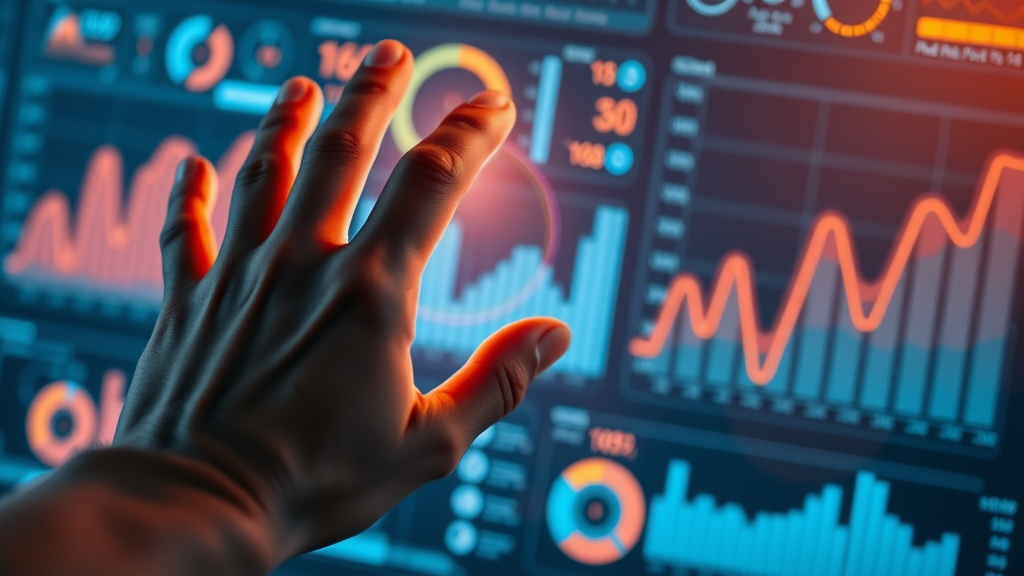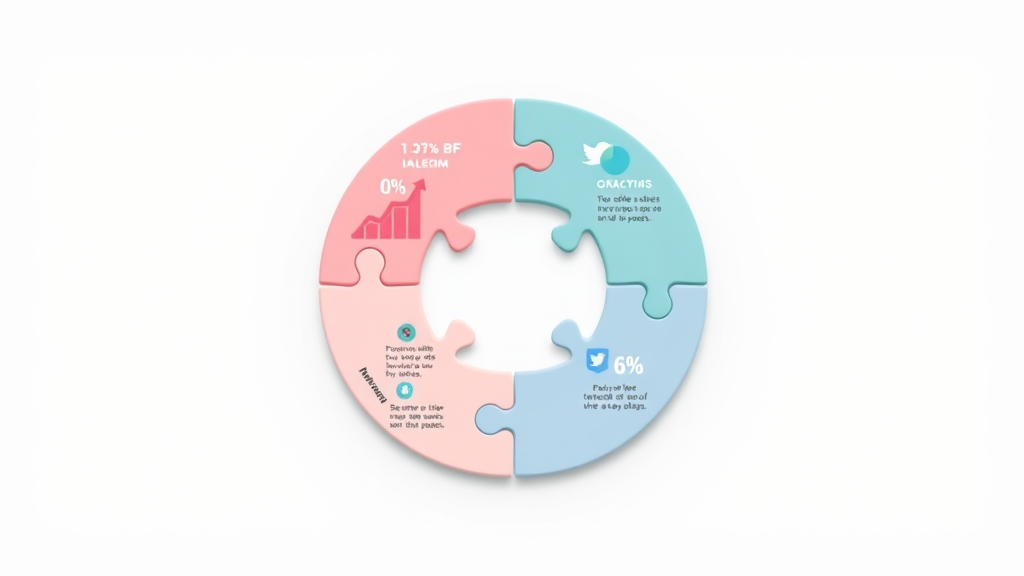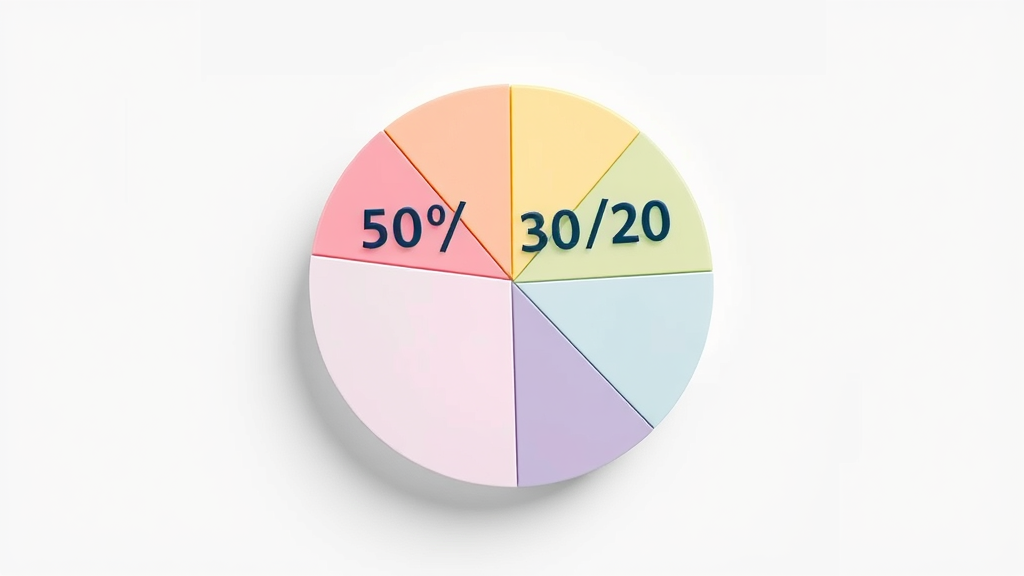Did you know that over 70% of businesses say social media analytics has fundamentally changed their marketing strategies? Social media analytics isn’t just about counting likes or chasing viral moments—it’s about unlocking patterns buried in millions of digital interactions and transforming them into actionable insights that drive real business results. Modern marketers who master these insights propel brands forward, outpacing rivals and anticipating trends before they peak. In this comprehensive guide, you’ll learn how to harness social media analytics for smart decision-making, sharper campaigns, and measurable growth—starting today.
The Critical Importance of Social Media Analytics for Marketers
Every effective marketer understands that social media analytics is the compass guiding successful digital strategies. By tapping into the tide of data generated across social platforms, brands gain priceless visibility into audience behavior, emerging trends, and campaign performance. Consider an example: a cosmetics company tracks which social media channels drive the most engagement, then allocates its advertising budget accordingly. This approach not only maximizes ROI but also ensures messaging resonates with the target audience. Social media analytics supplies the foundation for such tactical pivots, empowering brands to react to real-time feedback and shape memorable experiences.
For instance, when a gaming brand launches a new title, social listening tools monitor post-launch buzz, fan sentiment, and the viral spread of game clips. If analytics highlight negative sentiment toward a feature, the brand can adjust gameplay and messaging mid-campaign, preventing PR mishaps. This level of agile marketing is only possible with robust, timely analysis of social media data . In this rapidly evolving landscape, brands embracing analytics tools will dominate, while those ignoring these insights risk being left behind.

"Over 70% of businesses say that data from social media analytics has changed the way they market online. Are you keeping up?"
Decoding Social Media and Its Growing Influence
The influence of social media has skyrocketed, connecting billions across the globe and transforming how brands engage, convince, and convert their audiences. Social networks like Facebook, Instagram, TikTok, and Twitter have become arenas where consumer opinions are shaped and shared in real time. Brands use these platforms not only to broadcast updates but also to foster genuine two-way conversations—fueling loyalty and advocacy through constant interaction. Recognizing this dynamic, marketers increasingly rely on insights gleaned from media analytics to stay relevant and competitive in crowded markets.
Today, a single viral tweet or Instagram story can alter perception and spark global trends overnight. This unprecedented reach highlights the need for a strategic, data-driven approach—one centered on measuring, understanding, and acting on the right social signals. It’s clear: ignoring the growing weight of social media in your media campaign strategy means missing out on opportunities that power business growth and brand trust.
Unveiling the Power of Social Media Analytics
- Why brands rely on social media analytics for actionable insights
- How media analytics tools shape digital strategies
- The potential ROI of leveraging analytics tools in social media

Social Media Analytics: Definition, Meaning and Core Elements
What is Social Media Analytics and Why is it Essential?
Social media analytics is the systematic process of collecting, measuring, and interpreting data from social platforms to evaluate performance, audience sentiment, and trend efficacy. Unlike traditional marketing, social analytics delivers real-time, granular insights into what’s working, what’s not, and why. This makes it essential for marketers aiming to connect campaigns with business outcomes, whether it’s boosting engagement, tracking conversions, or managing reputational risks.
Embracing social media analytics enables brands to move beyond vanity metrics like follower counts, instead prioritizing meaningful measures—such as conversation volume, sentiment analysis, and content shareability. The ability to drill down into key data points allows teams to optimize campaigns with confidence, responding to shifts in consumer mood and competitive activity without delay. In short, robust social analytics forms the backbone of unbeatable digital marketing strategies.
The Key Components of Effective Social Media Analytics
Successful analytics strategies hinge on several core components. First is data collection : aggregating social media data across platforms, including likes, shares, comments, and mentions. Next comes data processing , where analytics tools clean and organize raw input, transforming it into structured information ready for analysis. Lastly, insight generation involves applying data analytics and visualization to extract actionable recommendations and forecast trends, ensuring marketing teams have the knowledge to make data-backed decisions.
Combining these elements with the right analytics tool ensures all layers of your social media campaign are measurable and manageable. Beyond campaign optimization, advanced media analytics tools facilitate competitive comparisons, influencer analysis, and brand health assessment—further increasing your strategic advantage.
| Analytics Tool | Data Collection | Sentiment Analysis | Cross-Platform Reporting | Automated Insights | Cost |
|---|---|---|---|---|---|
| Hootsuite Insights | Yes | Yes | Yes | Moderate | $$ |
| Sprout Social | Yes | Yes | Yes | High | $$$ |
| Buffer Analyze | Yes | No | Yes | Basic | $ |
| Socialbakers | Yes | Yes | Yes | Moderate | $$$ |
| Google Analytics (Social Module) | Yes | No | Basic | Basic | Free |

Unlocking Business Value with Social Media Analytics Tools
How Media Analytics Tools Transform Social Listening
Media analytics tools revolutionize the way brands approach social listening —a discipline that goes beyond tracking mentions and hashtags. By leveraging these tools, marketers can uncover emerging conversations, detect shifts in customer sentiment, and identify influential voices who may amplify (or detract from) the brand message. Sophisticated social analytic technologies enable proactive engagement, allowing brands to join conversations as they unfold and shape outcomes in real time.
Imagine monitoring thousands of real-time discussions about your latest product launch. Social media analytics tools aggregate these conversations, classify topics, and highlight high-impact interactions—empowering teams to refine messaging, manage crises, and build community around their media platforms. Ultimately, harnessing the power of social listening through analytics tools positions brands to anticipate needs and outperform competitors in crowded digital spaces.

Sentiment Analysis: Measuring Customer Voice with Social Media Analytics
Sentiment analysis is a centerpiece of modern social media analytics—transforming raw content into nuanced understandings of customer emotion and intent. By analyzing language, emojis, and context, sentiment analysis tools assign scores that reveal whether audience discussions are positive, negative, or neutral. Brands depend on these insights to monitor perception, adjust campaigns, and measure brand health over time.
For instance, when a new campaign receives unexpected backlash, marketers can pinpoint the source by analyzing clusters of negative sentiment across specific social media channels. Immediate action, such as clarifying messaging or addressing concerns, becomes possible—preventing reputational damage. With sentiment analysis, every campaign, social post, and brand interaction becomes part of a broader narrative that brands can manage proactively.
From Raw Data to Insights: How Social Media Data Drives Decisions
Collecting endless volumes of social media data means little if insights aren’t actionable. Social media analytics turns data points—likes, shares, mentions—into stories about customer journeys and campaign performance. Advanced data analytics techniques segment audiences, track conversion paths, and surface hidden correlations between content themes and engagement spikes.
Armed with these insights, brands can optimize timing, content format, and audience targeting. For example, analyzing engagement peaks may reveal opportunities for timed promotions, or highlight which media channels best support long-term brand loyalty. By making informed decisions grounded in real analytics, marketing campaigns become both more efficient and more impactful—maximizing business results at every stage.
Mastering Metrics: Types of Social Media Analytics Every Marketer Should Track
The Four Essential Types of Social Media Analytics
Every marketing team should be fluent in the four essential types of social media analytics —each offering a unique lens on performance, audience, and strategy:
- Descriptive Analytics : Summarizes what has happened (e.g., total engagements, follower growth).
- Diagnostic Analytics : Explores why outcomes occurred (examines causes of spikes or dips in engagement).
- Predictive Analytics : Forecasts likely future results (identifies emerging trends).
- Prescriptive Analytics : Recommends actions based on projected outcomes (suggests best times to post or content types to boost).

The 7 Layers of Social Media Analytics: A Deep Dive
Delving deeper, social media analytics unfolds across seven distinct layers—each contributing to a comprehensive understanding of your campaigns:
- Content Performance
- Engagement Analysis
- Audience Demographics
- Influencer Mapping
- Sentiment Assessment
- Competitive Benchmarking
- ROI & Business Impact
By navigating these layers, marketers ensure no data point is overlooked. Integrating insights across layers leads to multidimensional reporting—connecting the dots between platform activity and overarching brand objectives.
| Layer | Focus | Key Metrics | Business Value |
|---|---|---|---|
| Content Performance | What content resonates | Shares, clicks, views | Content optimization |
| Engagement Analysis | User interaction | Comments, likes, responses | Audience relationship |
| Audience Demographics | Who is interacting | Age, gender, location | Targeting precision |
| Influencer Mapping | Key voices | Reach, amplification | Influencer partnerships |
| Sentiment Assessment | Public perception | Sentiment score | Reputation management |
| Competitive Benchmarking | Relative performance | Share of voice, position | Market share insights |
| ROI & Business Impact | Bottom-line results | Leads, conversions, sales | Business growth |
"Great analytics turns noise into knowledge and knowledge into results."
Using Analytics Tools: How to Leverage Media Data and Social Analytics
Choosing the Right Social Media Analytics Tool for Your Brand
The marketplace is crowded with analytics tools , each offering specialized features for monitoring, measurement, and insight. Choosing the right tool means considering your business size, focus, desired metrics, and budget. For example, an enterprise might need a comprehensive, AI-powered analytics platform, while a growing startup may excel with a free solution focused on core metrics. Look for features like cross-platform reporting, customizable dashboards, automated alerts, and integration with broader business data analytics tools.
Engage in trials whenever possible and involve both marketing and data teams in the selection process to ensure the chosen social media analytics tool aligns with real campaign needs. Ultimately, your tool should make it easy to turn complex social media data into clear, actionable steps for every stakeholder in your organization.

Step-by-Step Guide to Setting Up a Social Media Report
- Define campaign goals
- Select appropriate media analytics tools
- Integrate data analytics across media channels
- Build and share actionable social media reports
Begin with clear campaign goals—are you after brand awareness, engagement, or conversions? Next, choose analytics tools that capture necessary data across media channels. Integrate and harmonize data for comparable insights, then build a media report that pulls together visualizations, key takeaways, and actionable recommendations. Distribution of this social media report ensures all teams and stakeholders stay aligned.
Key Metrics in a Social Media Report and How to Interpret Them
Your social media report should highlight core KPIs such as engagement rate, reach, conversion rate, sentiment, and share of voice. But the real power lies in context—comparisons to past campaigns, industry benchmarks, and targeted goals. For each metric, ask “what does this tell us?” and “how can we improve?” By interpreting these data points within broader strategic frameworks, brands ensure that every report drives meaningful action—not just statistics for statistics’ sake.
Practical Insights: Interpreting Social Media Performance Data
Media Channels vs. Social Media Channels: Where to Focus Your Analysis
Modern marketing spans both traditional media channels (TV, radio, print) and social media channels (Instagram, LinkedIn, YouTube). While traditional media delivers broad reach, social platforms enable targeted engagement and real-time feedback. Successful brands leverage analytics to determine where their specific audiences are most active and responsive, allocating resources for maximum impact.
Analyzing data across both media platforms reveals the true effectiveness of cross-channel campaigns. A spike in website visits correlated with a social media campaign, for example, signals strategic alignment. Consistently comparing metrics like cost per acquisition, engagement rate, and conversion across media channels empowers smarter investment choices and ensures the right messages reach the right audiences at optimal times.

The 50/30/20 Rule for Social Media Performance and Content
- 50% value content
- 30% curated content
- 20% promotional content
The 50/30/20 rule offers a balanced content framework: half your content delivers value (tips, how-tos), 30% is curated from industry sources, and 20% is promotional. This mix keeps your feed engaging and maintains audience trust while still allowing you to spotlight products or events. The structure makes analytics reporting cleaner, since brands can tie spikes in engagement back to specific content types and adjust strategies accordingly.

Applying Data Analytics to Optimize Social Media Marketing
Successful brands use data analytics not just to review past results but to dynamically improve social media marketing . Continuous tracking and testing—like A/B testing different headlines or experimenting with content timing—lets teams turn every interaction into a learning opportunity. By reviewing analytics dashboards, marketers instantly spot which topics or formats drive the most impact, and reallocate resources accordingly.
Case studies reveal that brands using social media analytics tools see increased ROI, better customer satisfaction, and faster content iteration. Optimization isn’t about perfection but about moving with agility: responding quickly to trends and audience needs while making data-driven adjustments. Modern marketing is a cycle of measure, learn, and improve—powered by the smart use of social analytics.
| Brand | Challenge | Analytics Insight | Result |
|---|---|---|---|
| Coffee Retailer | Low campaign engagement | Identified optimal post timing | 15% increase in engagement rate |
| Fitness Platform | Negative sentiment spike | Pinpointed feature complaints | Resolved issues, improved reputation |
| Fashion Brand | Poor influencer ROI | Mapped effective influencer audiences | 30% sales uplift post-campaign |
"Don’t just collect data, connect the dots. True value comes from applying insights."
Top Social Media Analytics Tools for Exceptional Media Reports
- Platform-specific analytics tools
- All-in-one social media analytics solutions
- Free vs. paid analytics tools comparison
The best social media analytics tools cater to different business objectives. Platform analytics (e.g., Facebook Insights, Twitter Analytics) offer granular engagement data for specific channels. All-in-one analytics tools like Sprout Social unify cross-channel reporting for brands with broader campaigns, while budget-conscious marketers benefit from free options like Google Analytics’ social media module. The right choice balances cost, features, support, and scalability—key considerations when building a sustainable media report system.

How to Evaluate and Measure the Impact of Your Social Media Reports
Analyzing the impact of your social media reports involves more than tracking downloads or open rates. Look at how insights are applied: are content changes being made, budgets reallocated, or strategies pivoted based on recommendations? Track downstream results like increased conversions or improved customer sentiment following reported adjustments. Ultimately, a successful analytics tool is one that informs and inspires real change within your team and business outcomes.
Integrating Social Analytics with Broader Business Data
The most advanced organizations integrate social analytics directly with sales, customer service, and product development datasets. For example, correlating social buzz with customer support logs reveals whether negative sentiment on Twitter translates into rising support tickets. These connections help break down silos, enabling unified, insight-driven growth strategies across all business functions. Seamless integration is a hallmark of next-level media analytics tools, multiplying their value many times over.
Common Pitfalls in Social Media Analytics and How to Avoid Them
- Ignoring important metrics
- Over-relying on vanity data
- Poorly structured media analytics tools
Even experienced marketers stumble without the right approach to social media analytics . Common mistakes include focusing on surface-level numbers (like likes) while ignoring deeper engagement or conversion data; becoming too reliant on flashy vanity metrics instead of what truly matters; and using analytics tools that don’t provide clear, actionable results. Avoid these pitfalls by setting clear goals, choosing comprehensive reporting solutions, and routinely reviewing your toolkit’s effectiveness. Remember: the quality of your data and your ability to act on it directly determines business success.

Future Trends: AI, Automation and Evolving Media Analytics Tools
The future of social media analytics is driven by AI , automation, and predictive modeling. Next-generation analytics tools are already delivering live alerts when sentiment shifts or when posts begin to trend. Automated reporting means less time crunching numbers and more time acting on insights. As media analytics tools continue to evolve, expect predictive analytics and personalization to take center stage, empowering brands to anticipate customer needs and optimize marketing even before trends fully emerge.
"The future of social media analytics will be proactive, predictive and personalized."
Frequently Asked Questions About Social Media Analytics
What is meant by social media analytics?
Social media analytics refers to collecting and analyzing data from social media platforms to measure brand performance, track audience sentiment, and make data-driven decisions for your marketing campaigns. Tools and dashboards help convert posts, comments, and reactions into actionable insights.
What is the 50/30/20 rule for social media?
The 50/30/20 rule is a content strategy guideline: 50% of your posts should provide valuable or educational content, 30% should be curated from relevant industry sources, and 20% should focus on direct promotions or company news. This structure keeps social media feeds balanced and engaging.
What are the four types of social media analytics?
The four key types are descriptive analytics (what happened), diagnostic analytics (why it happened), predictive analytics (what might happen), and prescriptive analytics (what to do next). Each offers unique insights for optimizing social media marketing strategies.
What are the 7 layers of social media analytics?
The seven layers include content performance, engagement analysis, audience demographics, influencer mapping, sentiment assessment, competitive benchmarking, and ROI/business impact . Together, they provide a multifaceted view of your social media presence and marketing results.
Recap: Maximizing Social Media Analytics for Business Growth
- Use analytics tools strategically to inform all social media actions.
- Prioritize actionable social media analytics data over vanity metrics.
- Choose a social media analytics tool that aligns with your business goals.
Take the Next Step with Social Media Analytics Today
Empower your brand by leveraging social media analytics and analytics tools to turn data into strategic growth opportunities. Don’t just report the numbers—act on them, and watch your marketing outcomes soar!

To deepen your understanding of social media analytics and its impact on marketing strategies, consider exploring the following resources:
-
“What Is Social Media Analytics? Social Media Analytics Definition” : This article provides a comprehensive overview of social media analytics, detailing its benefits such as measuring ROI, understanding audience behavior, and monitoring competitors’ campaigns. ( wix.com )
-
“Social Media Analytics: Learn How It Works & Grows Your Brand” : This guide offers practical advice on effectively utilizing social media analytics, including setting clear goals, identifying trends over time, and refining strategies based on data insights. ( coschedule.com )
By delving into these resources, you’ll gain valuable insights into harnessing social media analytics to drive informed decision-making and enhance your marketing efforts.
 Add Row
Add Row  Add
Add 




Write A Comment